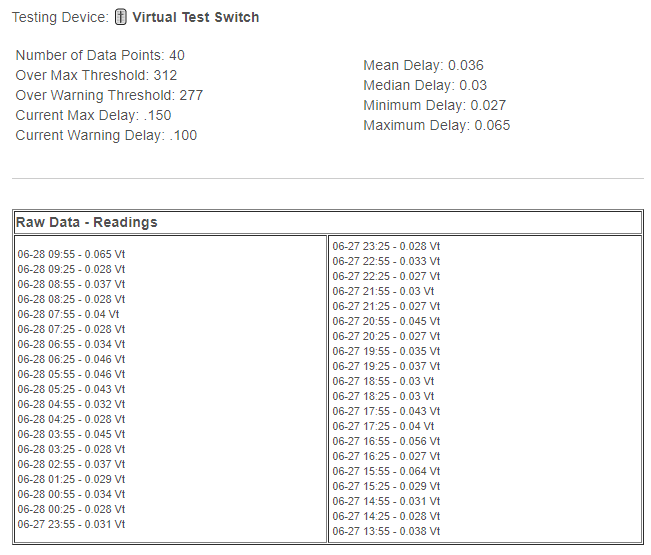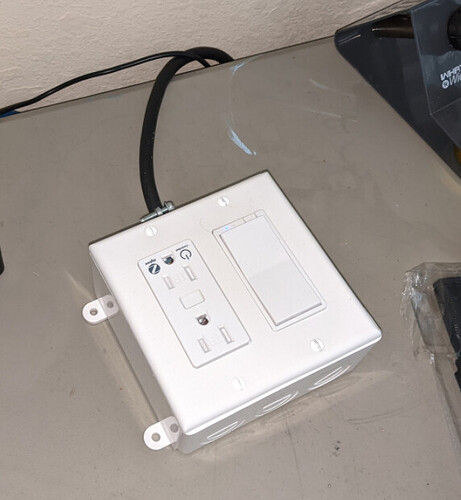Hi all, I've been a technologist for 30 years and I'm generally good with figuring things out, but this time I'm a little stuck. I have an HE upgraded to the latest version, and I have about 70 powered switches in a 3500 sq foot home. All of them all Leviton Decora zwave plus. These switches are either true switches, dimmers, 3way remote switches, wall jacks, or fan switches. On top of that, I have about 12-15 sensors, such as contact sensors and multi sensors. All of the sensors are aeotec (trisensor, multisensors, contact sensors, and one power meter). So to sum it up, there should be a very strong zwave network and all of the powered ones are the same brand, and all of the battery powered ones are another brand. Generally the system works well, but sometimes it's incredibly slow. I can wait 10s to a minute from a motion trigger to the light turning on. What's the best place to start? I've done the self heal (which shouldn't be necessary with zwave plus). An HE restart generally seems to help but that gain fades within a day. I can see the motion triggers firing in the log. I have device watchdog but I'm struggling to figure it out. It's the only custom code running. Other than that, I have groups set up, mode manager, rule machine, simple automations, motion lighting apps, and thermostat controllers. Would the community be able to help me figure this lag issue out? I did notice that in the zwave details dashboard, sometimes the rrt average can be 15s or more, even on devices super close to the hub.
I would start with adjusting the settings on any devices that support power/energy monitoring. Disable this feature on every device where it is not required. On those devices where you do require this functionality, like the Aeotec Power Meter, I would make sure that the settings are tuned to prevent spamming the Z-Wave network with excessive, unnecessary traffic.
Hope this helps.
This seemed to help my network alot when I disabled power monitoring on everything
Have you checked for ghost z-wave nodes?
I have only one device that reports power and it's set to report that every two minutes. Temperature sensors report mostly on 20 minute intervals.
Several days ago, I believe I checked for ghost devices and removed them, but I'd love to hear your process of identifying them and removing them.
Settings / Z-wave Details. Look for any devices with no In or Out numbers. Those are the Ghosts. Search forum for Removing Ghost Nodes. I’ve been lucky and haven’t had to use a separate z-stick and software to get rid of mine.
I would recommend getting Hub Watchdog from BPTWorld and set up a virtual device and a physical device. This will quantify the latency at least and you can monitor how different changes affect that latency as you go. You can install it via Hubitat Package Manager or from his Github.
https://raw.githubusercontent.com/dcmeglio/hubitat-packagemanager/master/apps/Package_Manager.groovy
Here's an example report:
Ghosts look like this in the zwave details (note how the clusters column is empty):

I prefer removing them with a UZB7 stick from mouser.com and the free software Z-Wave PC Controller 5. They usually go for around 19 bucks, although the hub has gotten much better at successfully removing them.
https://www.mouser.com/ProductDetail/Silicon-Labs/SLUSB001A?qs=u16ybLDytRbJsMfgk3EnSA%3D%3D
People usually run into problems removing ghost nodes when the hub can still ping the device. Powering the switch down by either air gapping it or flipping the breaker to the switch and then clicking refresh in the devices page so that it marks the device as failed and then clicking remove is usually enough to get rid of any ghosts. If you still have issues then the UZB7 can kill pretty much anything thats left.
This is the only reason I still have hair.
I would also download you latest backup to a pc, do a soft reset then restore the database. This will ensure no corruption. Do you have any zooz products in you mesh? Also if you have a lot of stuff paired at s0, disconnect them and pair them with no security. Honestly the only things that really need it are locks and garages. S0 is very very chatty and can bring your mesh to a crawl.
Pairing a device with S0 with no security might be tricky if @mark31 does not have a UZB-7 (or equivalent) stick thanks to the 700 series spec. Some devices like the Aetoec MS6 can do this others need to be paired via a secondary controller..
True... Some stuff will pair as none, but yes I probably should have mentioned getting a z-wave stick may be necessary with some devices. My bad
Wow, I love this community. Thanks for all the feedback everyone. I'm attaching a screengrab from my zwave details screen sorted with ghosts at the top. It's at the bottom of the post. The yellows are what I determined as ghosts. The purple are some of the high RTT devices (and today is a "good" day with most having healthy RTT).
So a few questions
- I did have a number of devices I tested and then got rid of. I don't remember how many of these I had. For sure there were 4 (two of which were powered, two on battery). There were also a few pairings for battery powered devices that stalled in "initializing" mode and there's a chance I didn't re-add them entirely right. I assume these are the ghosts. My question is, how can I find out what got ghosted? How do I know it's not a wall dimmer that went bad and somehow got ghosted? With so many devices, it's hard to know what might be missing. I guess I really don't understand the strict definition of a ghost.
- I pay for the HE cloud backup service. I could technically soft reset the HE hub and reload from the cloud. I've heard this isn't a great thing to do (for unspecified reasons). Would this help get rid of ghosts?
Ok, so that screenshot was a no-go. Please see the PDF at https://www.dropbox.com/s/u01iaygi0u0yvbi/ghosts.pdf?dl=1.
What's also interesting is that "Mark's lamp" which is highlighted in pink has a very high RTT time but it's literally 2 feet from the hub. It seems like it should just route straight to the hub
no s0. i have a few s2 and just noticed some are unauthenticated (e.g. i have one honeywell thermostat as s2 authenticated and the other is s2 unauthenticated). i guess i messed the paired up on one of them.
i never had a zooz. it's all Leviton and Aeotec. I had a homeseer paired in there but that was one of the items I decided to return
I've paired most of my S2 devices with "no security" i.e. no boxes checked when the security window pops up, which is different from unauthenticated etc... kind of confusing.
The ones that are S2 like my Aeotec and Ring extenders I kept whatever the default boxes were checked..
I would focus all your efforts on removing the top 6 ghost devices before worrying about the RTT. Those ghosts could be causing performance issues on the other devices.
I installed Hub Watchdog. Check out my install video https://youtu.be/_SFXhJL-N2Q
Did I do this right? When I setup the child app, I added just one physical device that is somewhat far away from the hub itself. I am not sure if I should add more to do a real test.
One is enough. You just want to see how the hub is responding to commands. I used a spare switch and put it in a box with a plug so I could move it around as I test stuff. My zigbee test outlet is in there too.
For virtual device testing I created two devices. One for storing the data and the other is just a virtual switch that turns on and off.
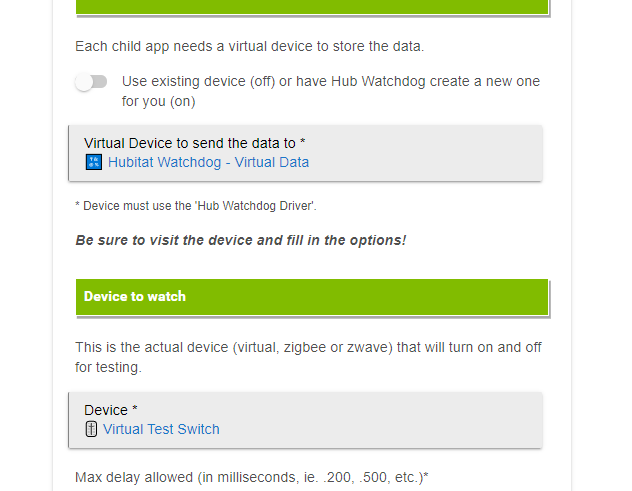
For Z-Wave testing I use one virtual to store data and the physical test switch.
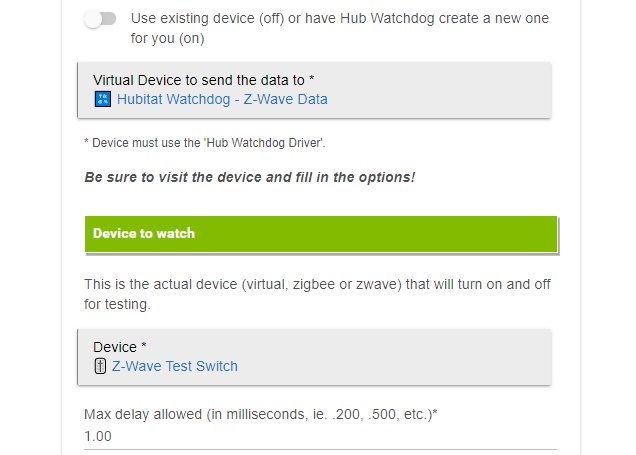
And another for zigbee.
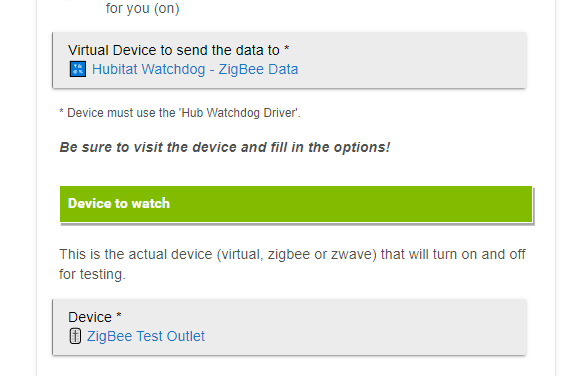
For virtual around .03 is good.
for z-wave around .53 is good
for zigbee around .11 is good
Ignore the hub behind the curtain. There is no spoon.
